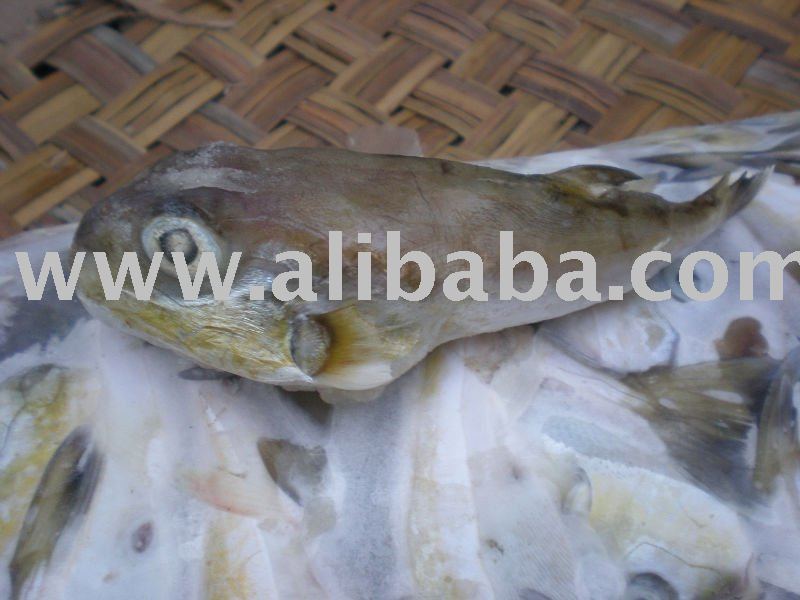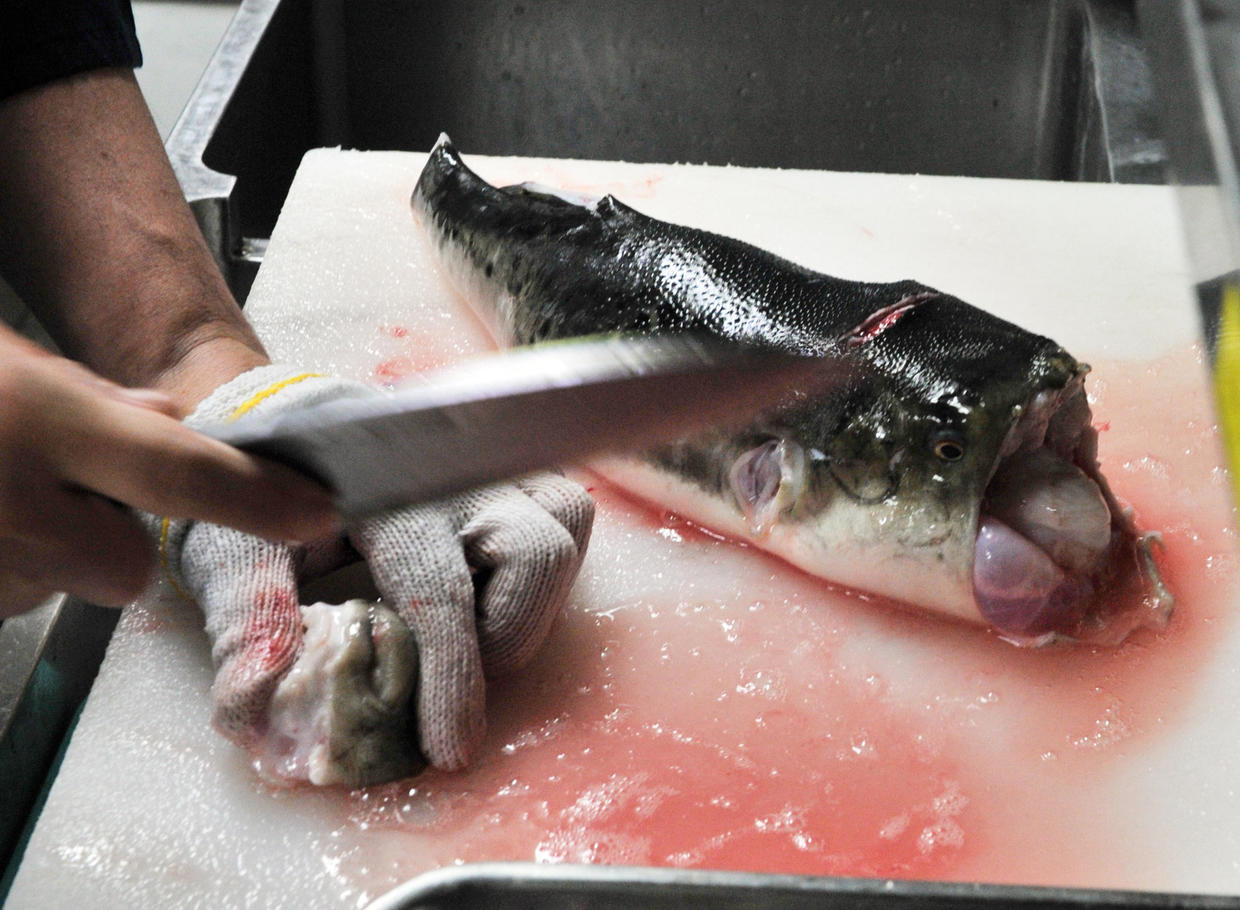

Also, some fish are more poisonous than others. Pufferfish that are born and grown in captivity do not produce tetrodotoxin until they receive some of the poison-producing bacteria, often by eating tissues from a toxin-producing fish. The fish obtains the bacteria by eating food containing these bacteria. The pufferfish does not create the poison itself rather it is generated by the bacteria Pseudomonas within the fish. This poison can also be found in other animals such as the Blue-Ringed Octopus, Cone Snails, or even some newts. The toxin is called tetrodotoxin, or more precisely anhydrotetrodotoxin 4-epitetrodotoxin and is about 1200 times deadlier than cyanide. This makes the fugu a lethal meal for most predators, including the occasional human. The fish's main defense, however, is the neurotoxin contained in its internal organs, mainly the ovaries and the liver, to a lesser extent in the intestines and the skin, and only minute amounts in the muscles and blood. Depending on the species the fugu can achieve an almost perfect spherical shape. The extremely elastic stomach then expands. Next, a branchiostegal ray (a modified gill arch) pushes the water down the esophagus into the stomach. This valve flaps upward and covers the entire mouth of the fish.
#Fugu fish preparation series
Peter Wainwright has analyzed the series of muscle actions, how a puffer fills its mouth with water, and then seals its mouth using a special valve at the bottom of the mouth. For a long time it was unknown how exactly a pufferfish inflates, but recently Dr. In case of danger, the fish inflates itself by filling its extremely elastic stomach with water (or air when outside of the water) until the fish is almost spherical (hence the name blowfish or pufferfish). Nevertheless, the fish is very curious and active, and in some cases even aggressive against other fugu or other fish.

Subsequently they are rarely found in open water, but stay rather close to the ground. The pear-shaped Takifugu is, like all pufferfish, not a very good swimmer and uses mainly the pectoral fins for propulsion. A very dark color may be a sign for stress or illness. Fugu can also change color over time, and they get a darker or lighter color. Takifugu Rubripes, for example, breeds from March to May and lays eggs attached to rocks at a depth of around 20m. Not all species are studied in detail, but the most researched takifugu is takifugu rubripes, due to the commercial consumption and breeding of the fish.

All fishes in the tetradon family have strong teeth that may grow too long if the fish cannot consume abrasive food. Their diet consists mostly of algae, mollusks, invertebrates and sometimes crustaceans. Takifugu can be found worldwide from about 45° latitude north to 45° latitude south, mostly in salt water near coral reefs or the shore, but some species also live in fresh water or brackish water. There are 25 species belonging to the genus Takifugu (formerly known as Fugu, with the exception of one remaining Fugu species). The fish is also featured prominently in Japanese art and culture. There is currently no antidote, and the standard medical approach is to try to support the respiratory and circulatory system until the effect of the poison wears off. The poison paralyzes the muscles while the victim stays fully conscious, and eventually dies from asphyxiation. Every year a number of people die because they mis-estimate the amount of poison in the consumed fish parts. But because small amounts of the poison give a special desired sensation on the tongue, these parts are considered the most delicious by some gourmets. Therefore, only specially licensed chefs can prepare and sell fugu to the public, and the consumption of the liver and ovaries is forbidden.
#Fugu fish preparation skin
The fish contains lethal amounts of the poison tetrodotoxin in the internal organs, especially the liver and the ovaries, but also in the skin and the testicles. The most prestigious edible species is the torafugu or Tiger Blowfish (T. The fish is highly toxic, but despite this - or perhaps because of it - it is considered a delicacy in Japan. These defenses allow the fish to explore actively without much fear of being attacked. The fish defend themselves by inflating their bodies to several times normal size and by poisoning their predators. There are 25 species belonging to the genus Takifugu, which can be found worldwide from about 45° latitude north to 45° latitude south, mostly in salt water, but sometimes also in fresh water or brackish water. Takifugu is a genus of pufferfish, often better known with the Japanese name Fugu ( Japanese: 河豚 or 鰒).


 0 kommentar(er)
0 kommentar(er)
